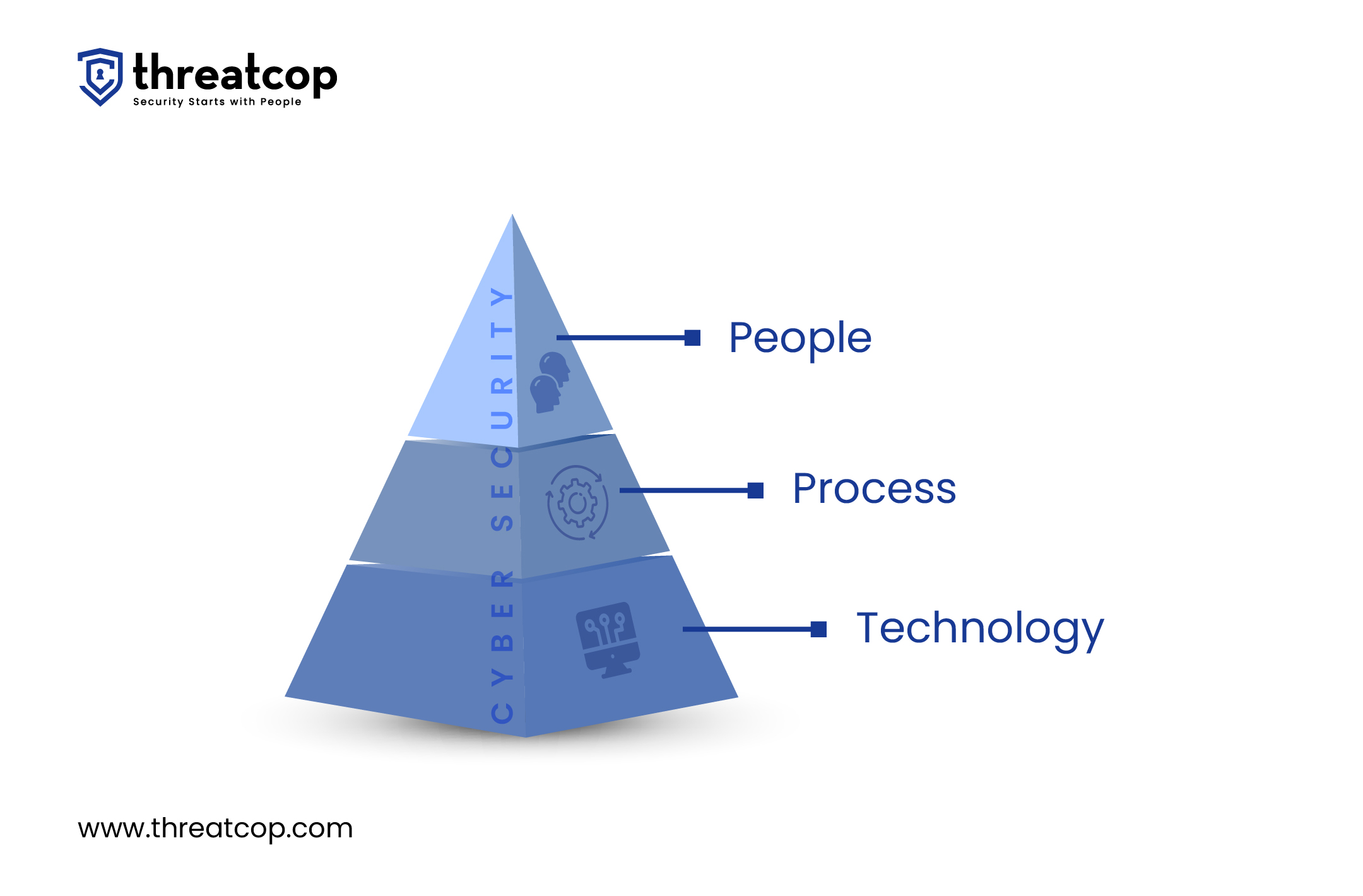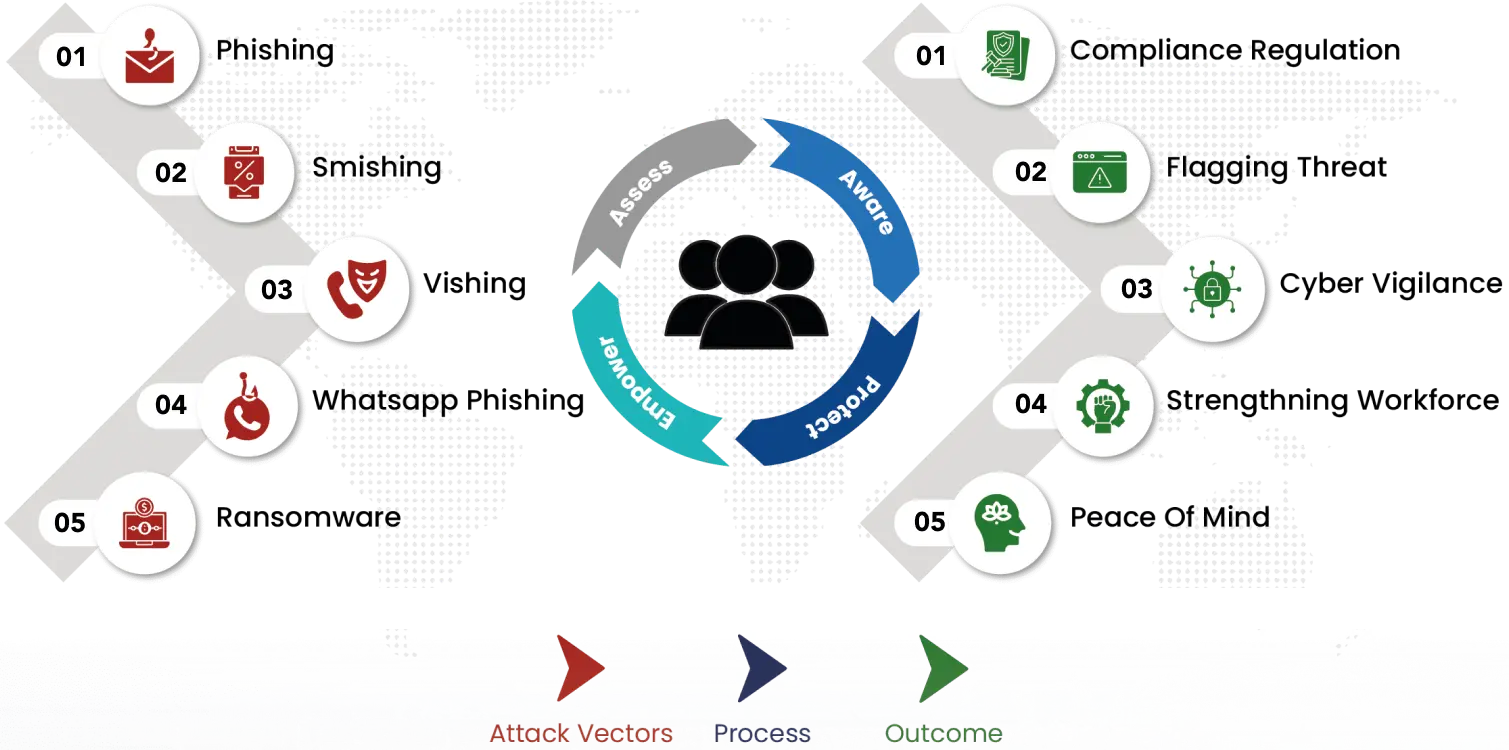In the evolving landscape of cybersecurity, a staggering reality confronts us- Human error is the driving force behind over 90% of data breaches. A study carried out by Stanford University in collaboration with a cybersecurity firm found that employees’ mistakes are the causes of 88% of data breaches. This alarming statistic reframes the narrative, challenging the conventional belief that the weakest link in our cybersecurity chain lies within our technology. Instead, it shines a spotlight on a more intricate element—our people.
Table of Contents
ToggleSubscribe to Our Newsletter On Linkedin
Sign up to Stay Tuned with the Latest Cyber Security News and Updates
In the face of this overwhelming evidence, a paradigm shift is underway. Out of many very few organizations are recognizing the critical need to address the human factor in cybersecurity, adopting a comprehensive approach known as People Security Management (PSM). This blog delves into the core framework and model guiding PSM, equipping you with the knowledge and tools to empower your people and transform them from the “weakest link” to the strongest defense against cyber threats.
Are you worried that your employees are putting your company at risk? Do you feel like you’re doing everything you can to protect your data, but you’re still not sure it’s enough?
“Embracing a people-centric security approach is not just a choice; it’s a necessity”- Dip Jung Thapa (COO at Threatcop)
These questions reverberate through boardrooms and IT departments alike, echoing the universal concern of security leaders grappling with the unpredictable and elusive human element. As we embark on this exploration of PSM, let’s shed light on the profound impact that neglecting the human factor can have on an organization.
Book a Free Demo Call with Our People Security Expert
Enter your details
Why Do We Need to Prioritize PSM?
In the recent incident in Nepal which took place on February 3, 2023, a group of eight malicious actors orchestrated a cyberattack using a fake app named “Nepali Keti.” Disguised as a harmless application shared over WhatsApp, this Android package kit (APK) turned out to be a tool for credential theft. filed accusations against the Bureau for fraudulent activity involving Rs 2.6 million and implicated the Kathmandu Crime Investigation Office for an amount of Rs 2 million.
The targets were individuals using net banking, believing in the safety of their digital transactions. However, the consequences were severe—several million rupees were stolen from compromised bank accounts. This short story shows how ignoring the human element in cybersecurity can be a real danger. It serves as a stark reminder that the human link is often the weakest, yet pivotal, element in our defense against cyber threats.
Adding to this looming danger is a forecast that, by the end of 2023, a staggering $8 trillion is predicted to be lost to cybercrimes. To put this into perspective, Cybercrime Magazine said that it amounts to nearly a third of the USA’s GDP in 2022 and a sum twice as much as India’s predicted GDP in March 2023.
How to Implement People-Centric Security with PSM?
The above-mentioned statistics vividly highlight the imperative for organizations to adopt robust cybersecurity frameworks. The need for a People Security Management (PSM) approach is evident. As cyber threats escalate, exploiting human vulnerabilities, implementing a comprehensive People Security Management (PSM) framework becomes a paramount necessity to mitigate potential attacks. People-centric security builds a human firewall around your business. Imagine a world where your employees are not just passive recipients of security awareness training, but active participants in safeguarding your organization. Before exploring the framework behind PSM let’s first briefly know about PSM.
The Cybersecurity Model Supports The Importance of People in Cybersecurity?

As we ascend the pyramid of cybersecurity, where Technology forms the base and Processes occupy the middle tier, we cater to the pinnacle—People. This topmost layer is where PSM becomes indispensable. CISOs/CIOs worldwide acknowledge employees as the prime medium for security breaches.
Read: CISOs should not bear the sole responsibility for ‘People Security’
The human element takes precedence due to its susceptibility to errors, vulnerabilities, and social engineering attacks, all of which can significantly harm companies. According to a study mentioned in PC World, up to 75% of data loss is attributed to human mistakes, underscoring the critical importance of prioritizing human factors despite the essential role played by technology and processes.
What is People Security Management (PSM)?

‘PSM can be defined as a strategic approach to cybersecurity that emphasizes the weakest link- ‘humans’ within an organization. It encompasses policies, practices, and training initiatives designed based on comprehensive threat intelligence to enhance the security posture by addressing human vulnerabilities, behaviors, and decision-making thought processes.’ Through PSM, Threatcop wants to create a world where employees are equipped to identify and stop cyber threats before they even reach your systems.
To know more about PSM read: People Security Management: Making ‘Weakest Link’ Into Strongest Defense
The basic framework of PSM
PSM strategically addresses the ‘weakest link’—humans within an organization. PSM stands as a resilient defense against social engineering and email attacks. To achieve this an organization should implement the exclusive AAPE Framework through security solutions based on this framework of PSM.
The Quadral Approach to People Security- AAPE Framework
Threatcop’s (PSM philosophy revolves around its unique AAPE model, representing a Quadral Approach to elevating people’s security awareness and behavior.
Assess: Assessing the weakest links within the organization, leveraging behavioral analysis and simulation attacks to pinpoint vulnerabilities.
Aware: Raising awareness is key, and our model fosters a culture of security awareness from the boardroom to the frontlines, transforming individuals into active participants in cybersecurity defense.
Protect: Robust protection measures are implemented, fortifying the organization against potential cyber threats by addressing identified vulnerabilities.
Empower: Individuals are equipped with the knowledge, skills, and tools necessary to be the first line of defense against cyber threats, actively contributing to the overall security posture.

This framework supports and enhances the PSM to help security leaders. Four solutions are based on this principle to safeguard organizations from five attack vectors- Phishing, Vishing, Ransomware, and WhatsApp. Through these four major products – Threatcop Security Awareness Tool (TSAT), Threatcop Phishing Incident Response (TPIR), Threatcop Learning Security Management (TLSM), and Threatcop Domain-based Message Authentication, Reporting & Conformance (TDMARC)– Threatcop follows a comprehensive approach to assess, raise awareness, and empower organizations in their cybersecurity endeavors.
Read More about the PSM Solution here
ROI of Implementing PSM and its Framework
Reduced risk of cyberattacks
By addressing human vulnerabilities, PSM significantly minimizes the success rate of phishing attempts and social engineering attacks. It protects as well as empowers employees to actively participate in cybersecurity.
Improved data security
Empowered employees play a crucial role in identifying and preventing data breaches, protecting sensitive information, and ensuring compliance with relevant regulations.
Enhanced brand reputation
Effective PSM fosters a culture of security awareness within the organization, minimizing damage to brand reputation in the event of a cyberattack.
Increased employee engagement
PSM empowers employees to become active partners in safeguarding the organization, leading to increased engagement and investment in security initiatives.
Ready to learn more about implementing PSM in your organization? Threatcop offers a comprehensive suite of security awareness training solutions, phishing simulations, and incident response tools designed to empower your employees and strengthen your security defenses. Contact us today to schedule a consultation and discuss how we can help you build a secure future.

Technical Content Writer at Threatcop
Ritu Yadav is a seasoned Technical Content Writer at Threatcop, leveraging her extensive experience as a former journalist with leading media organizations. Her expertise bridges the worlds of in-depth research on cybersecurity, delivering informative and engaging content.
Technical Content Writer at Threatcop Ritu Yadav is a seasoned Technical Content Writer at Threatcop, leveraging her extensive experience as a former journalist with leading media organizations. Her expertise bridges the worlds of in-depth research on cybersecurity, delivering informative and engaging content.
